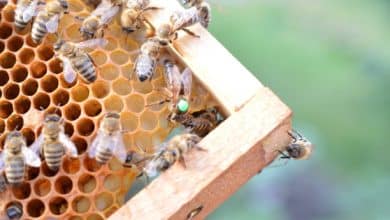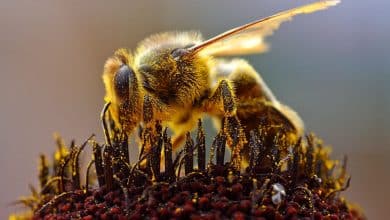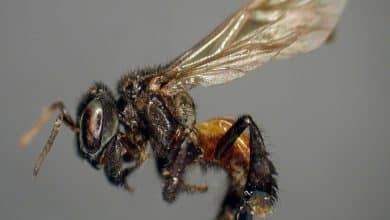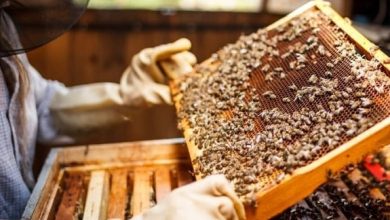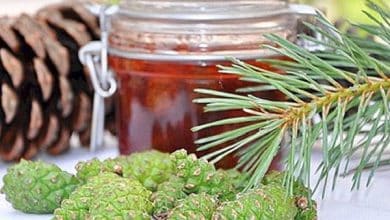The Nutritional Benefits of Bee Bread A Closer Look

Bee bread is a natural product obtained from the fermentation of bee pollen mixed with bee saliva and flower nectar inside the honeycomb cells of a hive, making it a nutrient-dense functional food rich in amino acids, sugars, fatty acids, minerals, organic acids, polyphenols, and vitamins.
Its importance extends not only to bee food and hive health but also to humans, as it contains bioactive molecules with protective or curative effects. In terms of production, bee bread is created through the careful process of harvesting and processing bee pollen, followed by proper storage and preservation methods.
When it comes to comparing bee bread with other bee products, such as royal jelly and bee pollen, there are nutritional differences that set them apart. Incorporating bee bread into one’s diet can be done creatively through various consumption methods or by using it as an ingredient in recipes.
Overall, bee bread offers numerous nutritional benefits that support antioxidant properties and immune system function. However, it’s important to consider potential side effects and precautions before adding it to your diet.
What is Bee Bread and its composition
Bee bread is a natural product created through the fermentation process of bee pollen, bee saliva, and flower nectar inside honeycomb cells. This nutrient-dense substance is rich in amino acids, sugars, fatty acids, minerals, organic acids, polyphenols, and vitamins. Its composition includes a diverse range of bioactive compounds that contribute to its health benefits.
The combination of bee pollen and other ingredients creates a unique blend of nutrients that support overall well-being. Bee bread has gained attention for its potential antioxidant and anti-inflammatory properties, making it a popular natural supplement choice.
Its composition offers a variety of health-supporting components that can contribute to a balanced diet. With its numerous nutritional benefits and functional properties, bee bread continues to be explored for its potential impact on human health.
Nutritional value of Bee Bread
Bee bread is a nutrient-dense substance that offers a range of health benefits due to its rich nutritional value. It contains a diverse composition of amino acids, sugars, fatty acids, minerals, organic acids, polyphenols, and vitamins. These bioactive compounds contribute to the overall well-being of individuals who incorporate bee bread into their diets.
The amino acids found in bee bread are essential for various bodily functions, such as building proteins and supporting muscle growth. The sugars present provide a quick source of energy, while the fatty acids contribute to cellular health and brain function. Bee bread also contains minerals like calcium, magnesium, and potassium, which are vital for maintaining strong bones and proper nerve function.
Furthermore, bee bread is rich in antioxidants, such as polyphenols and vitamins C and E. These antioxidants help protect the body against harmful free radicals and oxidative stress, reducing the risk of chronic diseases. Additionally, the vitamins in bee bread support immune system function, promote healthy skin, and aid in digestion.
Incorporating bee bread into one’s diet can provide essential nutrients that support overall health and well-being. Whether consumed on its own or used as an ingredient in recipes, bee bread offers a convenient way to enhance nutritional intake and enjoy its many health benefits.
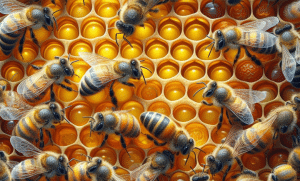
Health Benefits of Bee Bread
Bee bread offers numerous health benefits due to its rich nutritional value. Its diverse composition of amino acids, sugars, fatty acids, minerals, organic acids, polyphenols, and vitamins contribute to overall well-being. The amino acids support protein synthesis and muscle growth, while the sugars provide quick energy. Fatty acids promote cellular health and brain function. Minerals like calcium, magnesium, and potassium are essential for strong bones and nerve function.
Bee bread is also packed with antioxidants such as polyphenols and vitamins C and E, which protect against free radicals and oxidative stress. These antioxidants reduce the risk of chronic diseases. The vitamins in bee bread support immune system function, healthy skin, and digestion.
Incorporating bee bread into the diet provides essential nutrients for overall health. Whether consumed on its own or used in recipes, bee bread is a convenient way to enhance nutrition and enjoy its many benefits.
Note: For a more comprehensive understanding of the health benefits of bee bread, further research is recommended.
Antioxidant properties of Bee Bread
Bee bread is known for its impressive antioxidant properties. It contains polyphenols, as well as vitamins C and E, which play a crucial role in neutralizing free radicals and reducing oxidative stress in the body. These antioxidants help protect cells from damage and reduce the risk of chronic diseases. Incorporating bee bread into your diet can provide a natural source of antioxidants to support overall health and well-being.
Note: For detailed information on the antioxidant properties of bee bread, further research is recommended.
Immune system support from Bee Bread
Bee bread provides immune system support by enhancing the body’s natural defense mechanisms. It contains various vitamins, minerals, and bioactive compounds that help strengthen the immune response. Incorporating bee bread into your diet can help boost immunity and protect against infections and diseases.
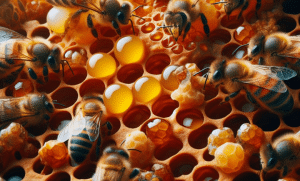
Bee Bread vs. Other Bee Products
- Comparison between Bee Bread and Royal Jelly: While both Bee Bread and Royal Jelly are products of bees, they have distinct differences. Bee Bread is a fermented mixture of pollen and honey, while Royal Jelly is a secretion produced by worker bees to feed the queen bee. Bee Bread contains a wider range of nutrients and bioactive compounds compared to Royal Jelly.
- Nutritional differences with Bee Pollen: Bee Bread and Bee Pollen are often confused due to their similar appearance. However, they differ in terms of nutritional composition. Bee Pollen is raw pollen collected by bees, while Bee Bread is fermented pollen. The fermentation process in Bee Bread enhances its nutritional profile, making it more bioavailable for our bodies.
Remember not to add any notes, disclaimers or explanations related to the written content after finishing it.
Comparison between Bee Bread and Royal Jelly
Bee bread and royal jelly are both bee products that offer unique nutritional benefits. While they share some similarities, there are also distinct differences between the two.
- Composition:
Bee bread is a fermented mixture of pollen, honey, and bee saliva. It undergoes a fermentation process inside the honeycomb before being used as nourishment for the hive. On the other hand, royal jelly is a secretion produced by worker bees to feed the queen bee. It contains proteins, sugars, vitamins, and minerals.
- Nutritional Differences:
Bee bread is rich in protein, amino acids, vitamins (especially B vitamins), minerals (such as iron, calcium, and magnesium), enzymes, and antioxidants. Royal jelly, on the other hand, is known for its high content of proteins, fatty acids, vitamins (including B vitamins), minerals (such as potassium and zinc), and a unique compound called 10-HDA (10-hydroxy-2-decenoic acid). - Health Benefits:
Both bee bread and royal jelly have been associated with various health benefits. Bee bread is believed to support digestion, boost immunity, improve athletic performance, enhance brain function, and reduce inflammation. Royal jelly is known for its potential effects on skin health, fertility, hormonal balance, and immune system support.
In conclusion, while bee bread and royal jelly are both beneficial bee products with their own unique compositions and health benefits. Their specific uses and effects may vary, so it’s important to consider individual preferences and consult with a healthcare professional before incorporating either product into your diet or health regimen.
Nutritional differences with Bee Pollen
- Bee pollen is often considered a superfood due to its rich nutritional profile, similar to bee bread.
- However, there are some differences in their composition and benefits.
- Bee pollen is collected by bees from flowers and is mainly composed of plant pollen.
- It contains various vitamins, minerals, enzymes, and antioxidants that contribute to its health benefits.
- On the other hand, bee bread is fermented bee pollen mixed with honey and bee saliva, enhancing its nutritional content.
- The fermentation process increases the bioavailability of nutrients and improves digestion.
- Bee bread also contains beneficial bacteria that support gut health.
- Compared to bee pollen, bee bread is easier to digest and absorb by the human body.
- Additionally, bee bread has a higher protein content and provides a more sustained release of energy.
Overall, while both bee pollen and bee bread offer nutritional benefits, bee bread’s fermentation process enhances its bioavailability and makes it more suitable for human consumption. Incorporating bee bread into your diet can provide a convenient and nutritious way to support your overall well-being.
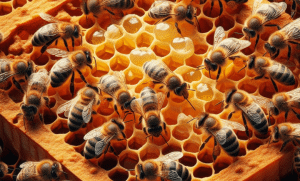
How Bee Bread is Produced
Bee bread is produced through a fascinating process carried out by honeybees within the hive. The bees collect pollen from flowers and mix it with their saliva and nectar to form small pellets. These pellets are then stored in the cells of the honeycomb, where they undergo fermentation. This fermentation process involves the action of enzymes and microorganisms present in the bee’s gut, which break down the complex components of pollen into simpler, more bioavailable forms.
Over time, the pellets transform into a dense and nutrient-rich substance known as bee bread. The bees seal the cells containing the bee bread with wax to preserve it for future consumption. This preservation method allows the bee bread to age and develop its unique flavor profile. Beekeepers can harvest bee bread by carefully removing the sealed cells from the honeycomb.
The harvested bee bread is then dried and stored in a cool and dry place to maintain its freshness and nutritional properties. The production of bee bread by honeybees is not only crucial for their own nourishment but also provides humans with a valuable source of nutrition and health benefits.
Harvesting and processing of Bee Bread
Harvesting and processing bee bread is a delicate process that requires careful handling to preserve its nutritional value. Beekeepers collect the bee bread by scraping it from the comb or using special pollen traps placed at the hive entrance. Once collected, it is essential to properly dry the bee bread to prevent spoilage and maintain its quality.
This can be done by spreading it out on trays in a cool, dry area or using low-temperature drying methods. After drying, the bee bread is typically ground into a fine powder before consumption. The powdered bee bread can be added to smoothies, yogurt, or baked goods for easy incorporation into the diet. It is important to store bee bread in an airtight container in a cool, dark place to prevent exposure to moisture and sunlight, which can degrade its nutritional benefits. By following proper harvesting and processing techniques, one can ensure that bee bread retains its potent nutrients and health-promoting properties.
Storage and preservation methods
Storage and preservation methods for bee bread are crucial to maintain its nutritional integrity and prevent spoilage. To ensure its longevity, bee bread should be stored in a cool, dry place away from direct sunlight. It is recommended to store it in an airtight container or sealed bag to protect it from moisture and oxygen exposure, which can lead to degradation.
Additionally, freezing bee bread can extend its shelf life, as the low temperature helps preserve its nutrients. When using frozen bee bread, it is important to thaw it slowly in the refrigerator to maintain its quality. It is advisable to consume bee bread within a reasonable timeframe to maximize its nutritional benefits. Regularly inspecting the stored bee bread for any signs of mold or unusual odors is essential, as these may indicate spoilage. By following proper storage and preservation methods, you can ensure that your bee bread retains its potency and remains a valuable addition to your diet.
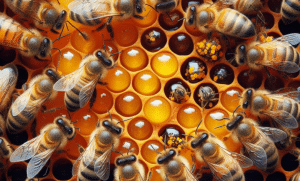
Incorporating Bee Bread Into Your Diet
– Add bee bread to smoothies or yogurt for a nutrient-rich boost.
– Sprinkle bee bread on top of salads or mix it into salad dressings.
– Use bee bread as a topping for oatmeal or other breakfast cereals.
– Blend bee bread into homemade energy bars or granola.
– Incorporate bee bread into baked goods like muffins or bread.
– Enjoy bee bread as a snack on its own or mixed with nuts and dried fruits.
– Replace regular breadcrumbs with bee bread crumbs in savory dishes.
– Use bee bread as a natural sweetener in desserts like cakes or cookies.
Overall, there are many creative ways to incorporate bee bread into your diet, whether you choose to use it as a topping, an ingredient in recipes, or enjoy it on its own. Just remember to source your bee bread from reputable sources and consult with a healthcare professional before making any significant changes to your diet. Enjoy the nutritional benefits that bee bread has to offer as part of a balanced and varied diet.
Creative ways to consume Bee Bread
1. Mix it into smoothies: Add a spoonful of bee bread to your favorite smoothie recipe for an extra boost of nutrients and a subtle floral flavor.
2. Sprinkle it on yogurt or oatmeal: Enhance the taste and nutritional value of your breakfast by sprinkling bee bread on top of yogurt or oatmeal.
3. Use it as a topping for salads: Add a crunchy texture and unique taste to your salads by incorporating bee bread as a flavorful topping.
4. Blend it into salad dressings: Create a homemade salad dressing by blending bee bread with olive oil, vinegar, and herbs for a nutritious and delicious dressing option.
5. Incorporate it into baked goods: Replace some of the flour in your recipes with bee bread for an added nutritional boost in muffins, bread, or pancakes.
6. Enjoy it as a snack on its own: Bee bread can be enjoyed as a standalone snack, providing a convenient and nutrient-dense option for on-the-go consumption.
Remember to source high-quality bee bread from reputable suppliers to ensure its purity and freshness. Incorporating bee bread into your diet can be an exciting way to enhance both the flavor and health benefits of your meals or snacks.
Recipes using Bee Bread as an ingredient
Recipes using Bee Bread as an ingredient can add a nutritious boost to your meals. One simple way to incorporate bee bread is by adding it to smoothies. Blend bee bread with your favorite fruits, vegetables, and liquid base for a nutrient-rich and energizing drink.
Another option is to sprinkle bee bread on top of yogurt, oatmeal, or salads for added texture and flavor. You can also use bee bread as a topping for toast or mix it into homemade granola or energy bars for a healthy snack. Additionally, bee bread can be incorporated into baked goods such as muffins or bread by substituting a portion of the flour with ground bee bread.
Experiment with different recipes and find creative ways to enjoy bee bread in your favorite dishes. Remember to start with small amounts and gradually increase the quantity according to your taste preferences. Enjoy the benefits of bee bread while exploring new flavors and culinary possibilities in your kitchen.
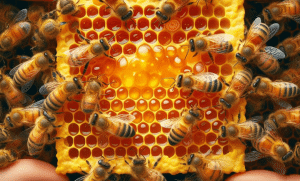
In conclusion, bee bread is a highly nutritious product that offers numerous health benefits. Its composition includes over 300 compounds such as amino acids, sugars, fatty acids, minerals, organic acids, polyphenols, and vitamins. These components contribute to its antioxidant, antifungal, antibacterial, and antitumoral properties. Bee bread can support the immune system and provide protection against various diseases.
When incorporating bee bread into your diet, there are several creative ways to consume it. You can add it to smoothies, sprinkle it on top of yogurt or cereal, or use it as a topping for salads. There are also recipes available that incorporate bee bread as an ingredient.
It is important to be aware of potential side effects and precautions when consuming bee bread. Individuals with pollen allergies may experience allergic reactions, so consulting with a healthcare professional is advised. Additionally, bee bread may interact with certain medications, so it is important to check with your healthcare provider if you are taking any medications. Pregnant or breastfeeding women should exercise caution and seek medical advice before consuming bee bread.
Overall, bee bread is a valuable addition to a healthy diet, providing essential nutrients and potential health benefits. By sourcing from reputable suppliers and following proper storage guidelines, you can enjoy the nutritional advantages of this natural superfood.
Summary of the nutritional benefits of Bee Bread
Bee bread offers numerous nutritional benefits. It is rich in proteins, soluble sugars, essential amino acids like threonine and lysine, and minerals. The protein content of bee bread covers 45.14% of daily values (DVs), while its sugar content covers 53.56% of DVs.
These nutrients make bee bread a valuable addition to your diet, providing a natural source of energy and supporting overall health. The bioactive molecules found in bee bread also contribute to its health benefits. Bee bread has antioxidant properties, helping to protect cells from damage caused by free radicals. Additionally, it supports the immune system, boosting its function and aiding in fighting off infections and diseases.
Incorporating bee bread into your diet can be done in creative ways, such as adding it to smoothies or using it as a topping for yogurt or salads. By enjoying bee bread regularly, you can take advantage of its nutrient-rich profile and promote your overall well-being.
Potential side effects and precautions to consider
Potential side effects and precautions to consider when consuming bee bread include allergic reactions in individuals with pollen allergies. It is important to consult with a healthcare professional before adding bee bread to your diet, especially if you have a history of allergies.
Additionally, bee bread may interact with certain medications, so it is advisable to check with your healthcare provider if you are taking any medications. Pregnant or breastfeeding women should also exercise caution and seek medical advice before consuming bee bread.
To minimize the risk of contamination, it is essential to source bee bread from reputable sources and ensure proper storage conditions. If you experience any adverse reactions after consuming bee bread, such as difficulty breathing or swelling, seek immediate medical attention. Overall, while bee bread offers many nutritional benefits, it is crucial to be aware of potential risks and take necessary precautions when incorporating it into your diet.
(Note: The content provided does not constitute medical advice. Always consult with a healthcare professional before making any changes to your diet or health regimen.)
Thank you for taking a closer look at the nutritional benefits of bee bread with us. We hope you found this information valuable and informative. Bee bread truly is a powerhouse of nutrients with numerous health benefits for both bees and humans alike. If you have any thoughts or questions on this topic, we would love to hear from you. Stay tuned for more insightful content on bee products and their impact on health and well-being.



